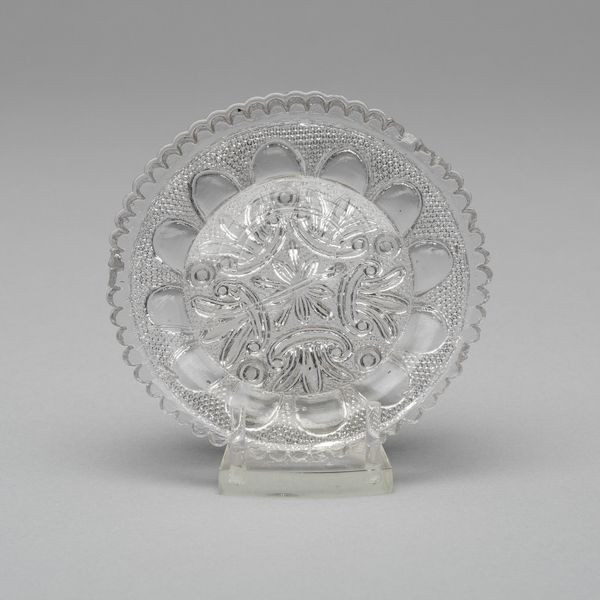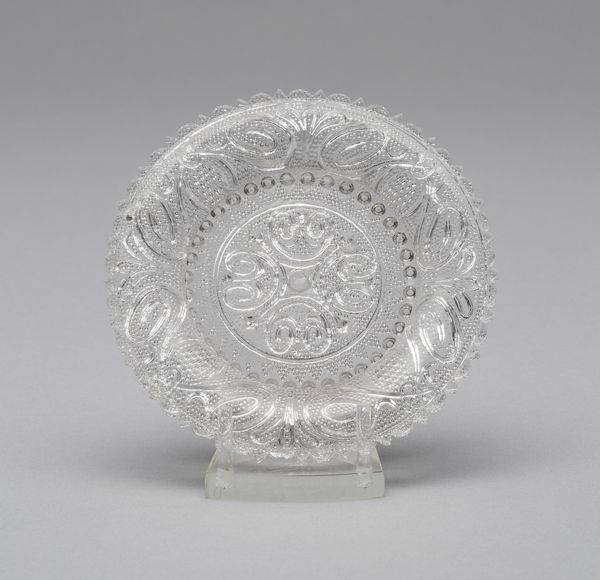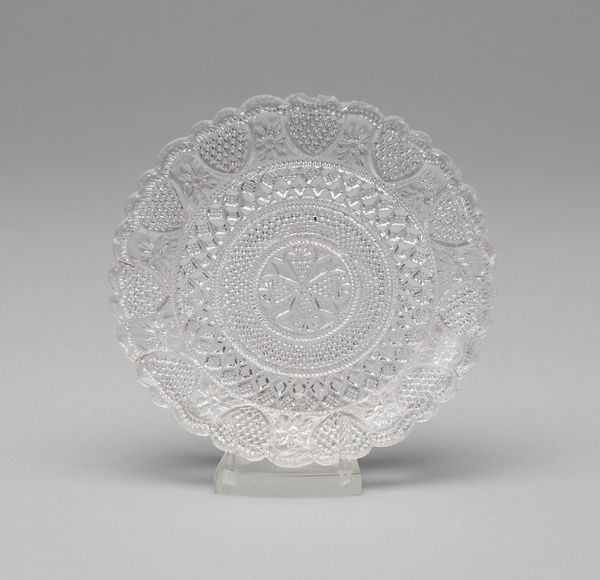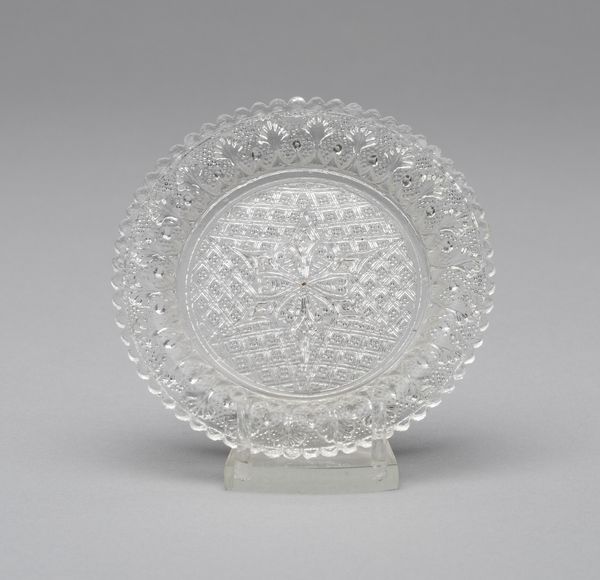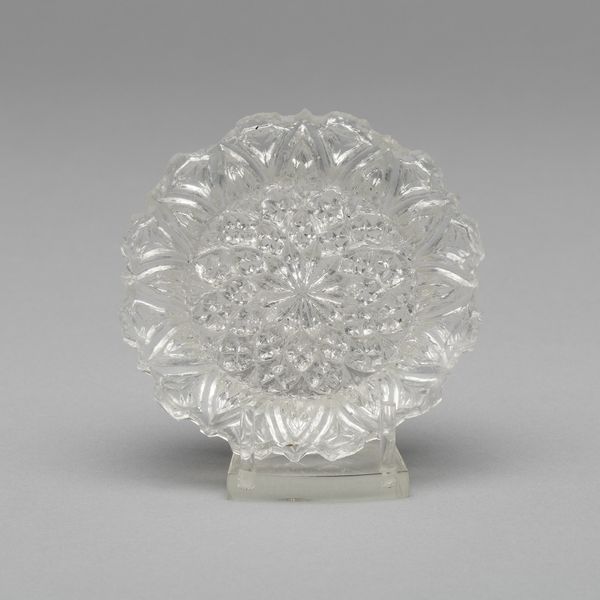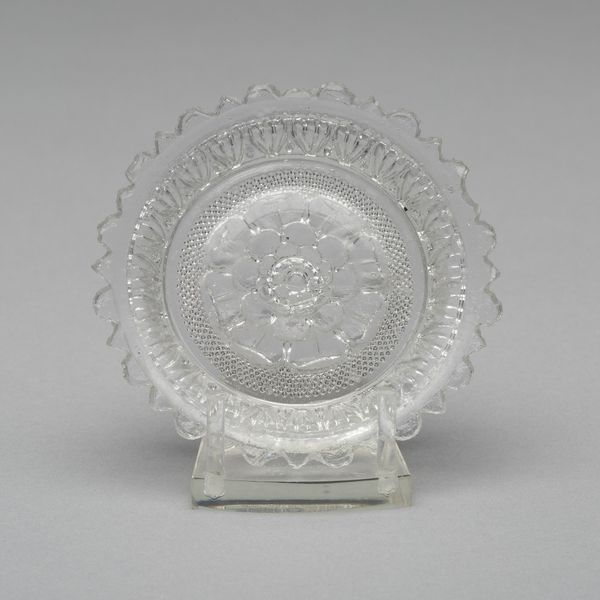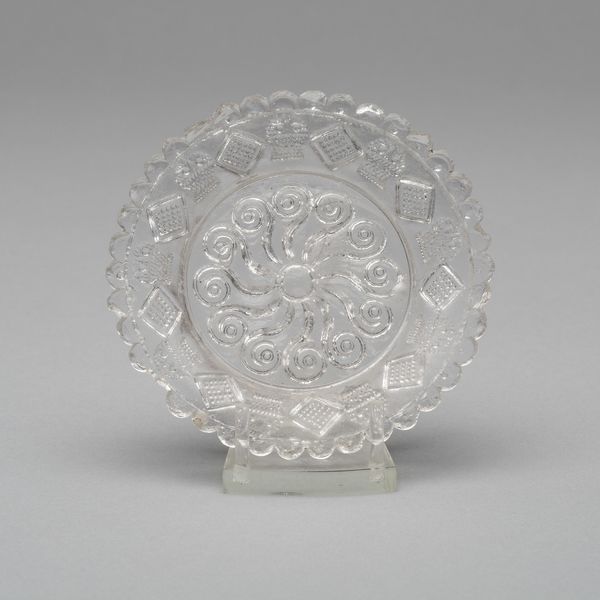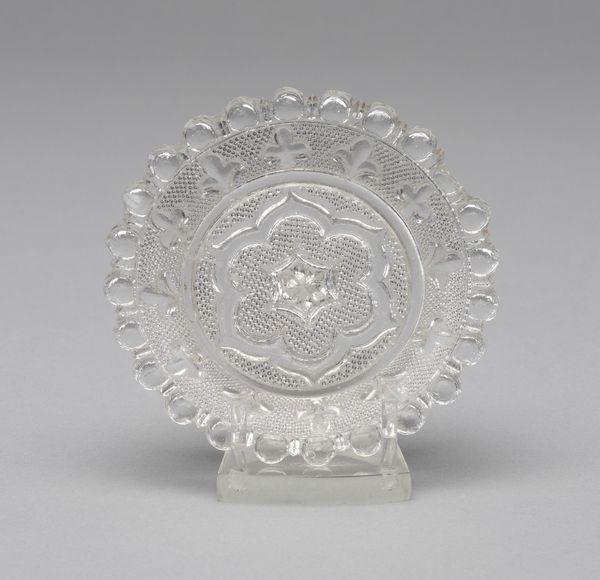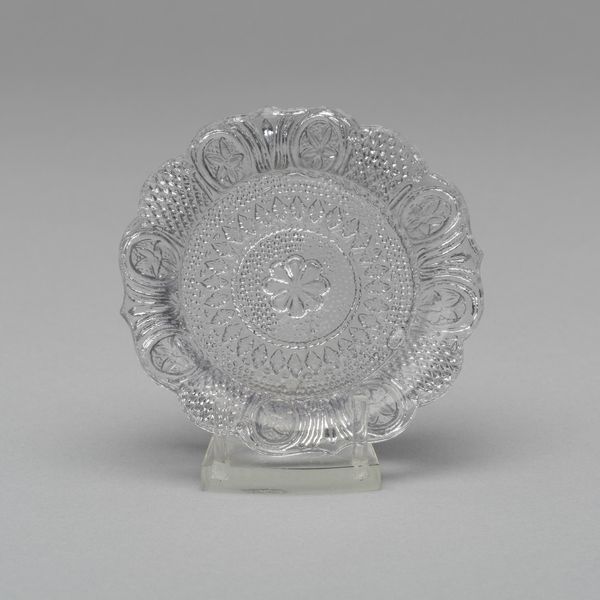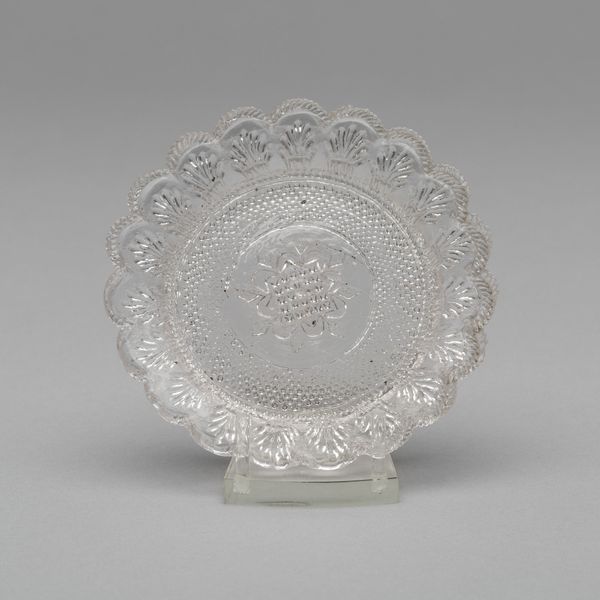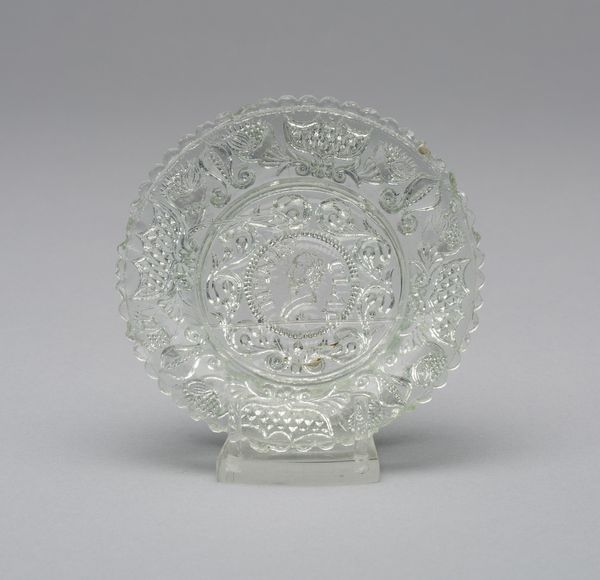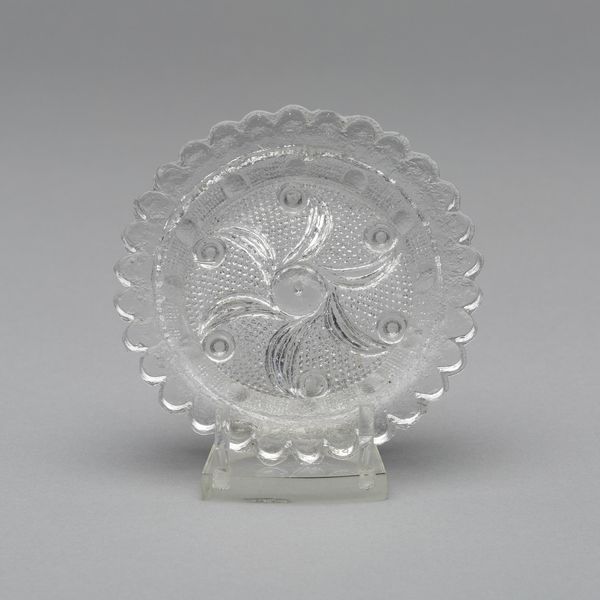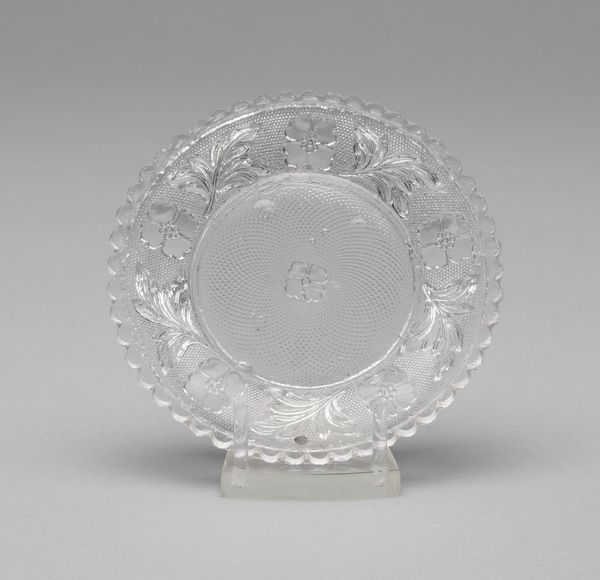
glass
#
glass
#
decorative-art
Dimensions: diam. 8.1 cm (3 3/16 in.)
Copyright: Public Domain
Editor: This object, called "Cup Plate", dates from between 1830 and 1835, and is located at The Art Institute of Chicago. It is made of glass and its creator is anonymous. I find the glasswork intricate, especially considering its domestic purpose. What strikes you about this seemingly simple piece? Curator: From a materialist perspective, it's crucial to understand the labor and means of production involved in creating pressed glass like this in the 1830s. This wasn't just decorative; it reflected the rise of industrialization and changing patterns of consumption. Look closely—the pattern wouldn’t be possible without specific techniques, molds, and factories that provided accessibility in American homes. Editor: So, its beauty lies not just in the aesthetic, but also in the story it tells about the labor practices of the time? Curator: Exactly! The cup plate becomes evidence of specific social and economic conditions. Who was producing these? What were their working conditions? And who had access to purchasing them? These are important questions to consider. We might also examine how this seemingly "minor" object challenges traditional distinctions between "high art" and craft. Editor: That's fascinating! It's like understanding the supply chain of its time, visible through the glass itself. Curator: Precisely! Analyzing objects like these pushes us to see beyond formal qualities and to recognize them as products deeply embedded in a network of production, labor, and social meaning. Editor: This conversation shifted my view of this cup plate; I had originally viewed it only in terms of artistry and decoration, but it is much more. Thank you for this revealing perspective. Curator: My pleasure! The smallest object can reflect the largest social forces.
Comments
No comments
Be the first to comment and join the conversation on the ultimate creative platform.
